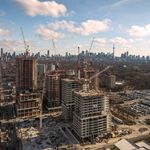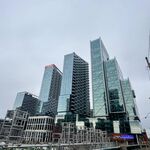It all comes down to who do we want the additional funding burden to fall onto. A gas tax is a great way of making a blanket tax. Problem is, it's not likely to reduce congestion. Increased gas prices have very little effect on the amount people drive on a day to day basis.
I think this is a very important distinction touched upon by gweed123. Pricing to deal with congestion, and pricing to deal with raising revenue for delivering a service (i.e. transit) can often be two very different things. Taxing gas is administratively easy. It, however, is a blunt instrument, and as such probably best reserved for raising revenue. Any reduction in general traffic volumes would be an outcome of a potential reduction in vehicle use. However, the choke points of peoples' commutes which people imagine/visualise/refer when they think of 'congestion' might still remain.
I.e. your commute home is still likely to be as arduous - you just may encounter a little less volume on the weekend if people do fewer side trips. As such, if the goal is to address congestion, it really is not the best tool.
Ultimately, one has to define the nature of the congestion in order to address it. Is there a temporal component to it (i.e., during the 3 - 7pm rush home)? Is there a spatial component to it (i.e. at the 401/400 interchange)? Is there a modal component (i.e.too many of a specific type of vehicle on the road)? Hence the preference towards road tolls and/or congestion tolls instead of a gas tax to deal with congestion. Road tolls and congestion tolls can be targeted to address these specific components (often requiring the right technologies which may well eat up the revenues generated - don't forget about the operating cost in addition to the capital cost) and deal with congestion more effectively. It may not remove these vehicles from the road overall (there are only so many ways to reasonably get from point A to point B), but redistribute road use across time, space, and mode thus dealing with the congestion.
Basically, even if a big ol' gmc cube van driver chooses to use a different road (change in space) at a different time (change in time) in a transit connect (change in mode), that still has effectively dealt with the congestion that was determined to be a problem. The driver is still driving, but not where/when/how it was causing a problem. You haven't eliminated the trip, but you have changed its nature through pricing.
Taxing gas might just reduce the overall kilometres driven by the driver (i.e. fewer side trips), make the driver switch to something more fuel efficient (block v8 gmc to an anaemic four-banger in a transit connect) but not affect their route or timing which likely may be the root contributor of the choke points people identify as 'congestion'. Charging use of the road way that is the point of congestion would be more effective than taxing gas.
Whether charging for use of something that is already (mostly) paid for through taxation is a different story. But in the age of user fees, I suppose there shouldn't be any moral qualms about it . .?




